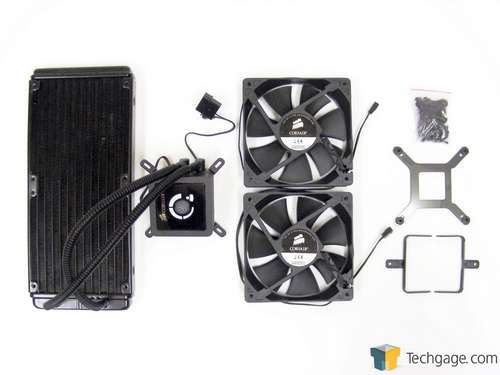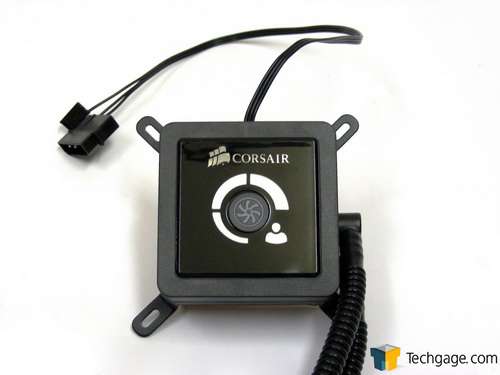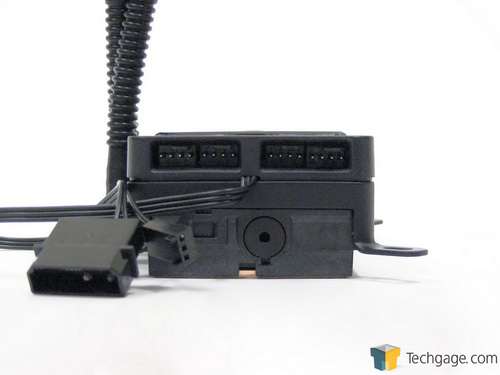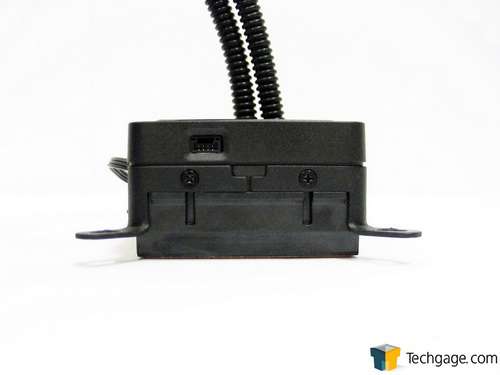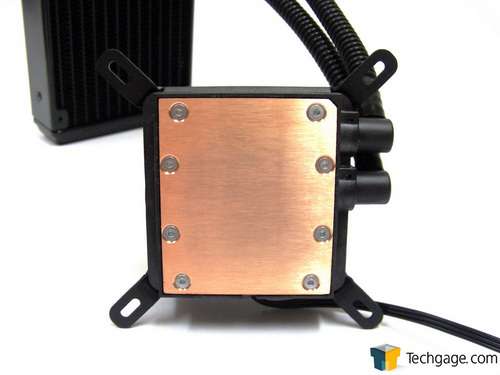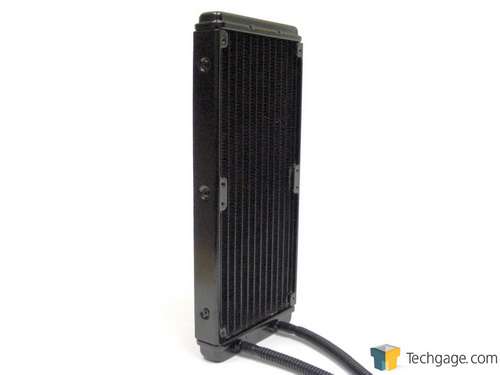- Qualcomm Launches Snapdragon 4 Gen 2 Mobile Platform
- AMD Launches Ryzen PRO 7000 Series Mobile & Desktop Platform
- Intel Launches Sleek Single-Slot Arc Pro A60 Workstation Graphics Card
- NVIDIA Announces Latest Ada Lovelace Additions: GeForce RTX 4060 Ti & RTX 4060
- Maxon Redshift With AMD Radeon GPU Rendering Support Now Available
Corsair H100 Self-Contained Liquid CPU Cooler Review
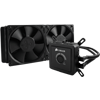
Corsair has yet to release a liquid CPU cooler we haven’t been impressed by, and the H100 doesn’t become an exception. Building on what made the H80 such an impressive performer, the H100 doubles the radiator length, enabling support for up to 4 fans. One thing it proves? Bigger can indeed be better.
Page 1 – Introduction
So, who wants to have more all-in-one liquid cooling fun? I know I do! On the review table today is Corsair’s brand-new addition to the Hydro line up, the beefy H100. This marks the third product released in conjunction with Canada-based CoolIT Systems, which has also produced the very popular H60 and H80 coolers.
It’s hard to believe that the Hydro series kicked off in 2009 with the Asetek-inspired H50. Since then, we’ve been lucky enough to review all of the Hydro models and have been left more impressed each time. The H80 currently holds the cooling crown in our temperature database so it’ll be interesting to see how this newest offering scales in comparison.
The H100 is the stretch limo, double-wide trailer, Super Big Gulp of the Hydro series. It features all of what made the H80 a winner but with a larger radiator and the potential for a more robust cooling setup. It’s also ready to go starting with AM2 and LGA775 systems, all the way up to what is on the market today as well as the upcoming LGA2011 socket.
Enough talk. It’s time to find out if bigger really is better.
The block and pump are contained in a low-profile housing that sits over top of the CPU. On the top of the housing is the push button control with a light up indicator that allows users to set one of three different cooling modes depending on the performance required.
One change that has been made since the H80 is the addition of two more fan headers on the block and pump housing. The H80 only had two headers since it was a 120mm radiator but the H100 can handle up to four fans in a push/pull configuration. Power for the pump is drawn by 2-pins in a 4-pin connector block while fans are powered by 2-pins in a Molex connector.
On the left side is the header where the upcoming Link kit connects. It will allow users to control the cooler performance and any added LED light strips from within the operating system instead of having to open the case.
The business end of the copper block that contacts the CPU is also the same as the H80. There are machine marks visible but they are very light and the surface is perfectly flat on both axes when checked with a straight edge. On the inside are the split-flow manifold and the micro-channels that help pull extra heat away from the CPU and transfer it to the fluid.
Over on the right side of the block and pump housing are the ribbed inlet and outlet hoses with fittings that swivel to allow a good degree of movement so the hoses can be positioned. The hoses run about 11.5″ to the 240mm aluminum radiator. As mentioned before, two fans can be installed on each side in a push/pull configuration for extra cooling power.
Speaking of fans, the two that are included with the H100 are the same as the ones found on the H80 and carry the same part number, CF12S25SH12A. Corsair has them rated between 1300 and 2500 revolutions per minute (RPM) and are able to push between 46 and 92 cubic feet (of air) per minute (CFM) combined, while generating between 22 and 39 A-weighted decibels (dBA) of noise.
Most of the bits and pieces used in the installation are stuffed into a baggie and are the same as those included with the H80 with the exception of four short screws. Normally I would show all of the included hardware but it’s pretty much been done before… twice. With that said it’s time to move onto what most folks want to see – installation and testing.
Support our efforts! With ad revenue at an all-time low for written websites, we're relying more than ever on reader support to help us continue putting so much effort into this type of content. You can support us by becoming a Patron, or by using our Amazon shopping affiliate links listed through our articles. Thanks for your support!




